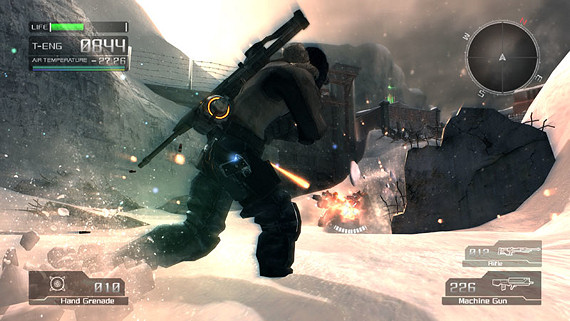Radeon HD 2900 XT
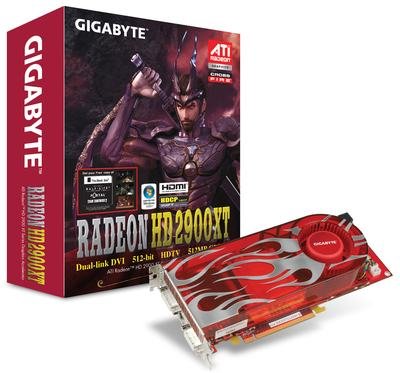
To say that the announcement took a long time is almost nothing to say, but taking into account the fact that there was no special influx of any DirectX 10 applications on the market, in principle, one can find a reason for a long refinement of the Radeon HD 2000.
Next generation architecture

Of course, the structure of the older chip, ATI Radeon HD 2900, deserves a detailed study. AMD calls its architecture the second generation of the Unified Shader architecture, with the clarification that the first generation of this architecture was implemented in the Xenos chip for the XBOX 360 game console.

The R600 chip is equipped with a new "distribution processor" - the task manager (dispatch processor), distributing threads to 64 superscalar stream processors, each of which contains five discrete independent stream processing modules and a branching module - a total of 320 unified shader processors in 5-component SPU modules ( Streaming Processing Unit) that provide processing of up to 5 Multiply-Add instructions per clock, plus one of the processors can process more complex instructions (SIN / COS / LOG). The dynamic balance of loading shader processors with vertex, geometry and pixel operations is provided automatically by the hardware scheduler.
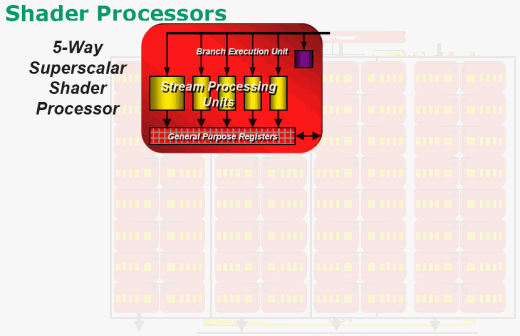
Thus, AMD declares the theoretical performance of the HD 2900 XT at a clock frequency of 742 MHz up to 475 GigaFLOPS per core, up to 237 billion single precision floating point operations, up to 950 GigaFLOPS in the CrossFire configuration.
Separate independent texture modules, of which there are four in the R600, are responsible for sampling texture and vertex data, they, in turn, are characterized by the presence of four sampling modules and four addressing modules in each - a total of 16/16 for the HD2900 chip, 4/8 for the HD2600 /4 for HD2400. The older HD2900 and HD2600 chips also have a two-level L1 and L2 cache, while the HD2400 chip has a single combined vertex and texture data cache.
Texture modules work with the new 32-bit HDR texture format implemented in DirectX10 (RGBE 9:9:9:5), support full-speed 64-bit HDR textures with bilinear filtering and 128-bit half-speed texture sampling and filtering; trilinear and anisotropic filtering is supported for all formats, while the maximum size of supported textures is declared as 67 megatexels (8192 x 8192).


The design of the memory interface of the ATI Radeon HD 2900 chips, although it resembles the ring internal architecture already known from the Radeon X1800, has undergone a radical redesign. Now it is not 256-bit, but 512-bit, with a 1024-bit internal ring bus - 512 bits for reading and 512 bits for writing, the peak performance of the HD 2900 XT memory controller on all eight 64-bit channels can reach 106 Gb / s .
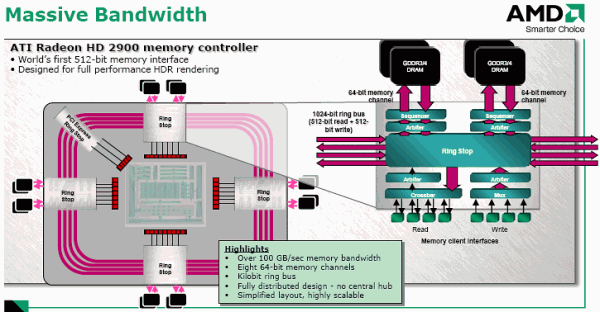
One of the most interesting innovations is the programmable tessellation module (Tessellation), which is available in all chips of the ATI Radeon HD 2000 series. The tessellation module, also implemented by ATI in the graphics chip for the Xbox 360 game console, makes it possible to achieve more detailed and complex surfaces and shader effects, while ensuring efficient compression of geometric data at the hardware level and thus offloading the CPU and data buses.
In other words, tessellation is a way of dynamically transforming simple structures into more complex polygonal models.
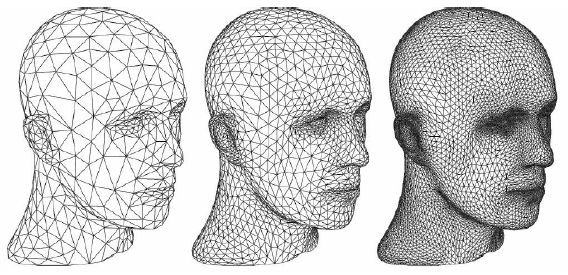
ATI's new chips also feature a new generation of anti-aliasing technologies and new modes. So, in addition to 8x Multi-Sample AA, ATI Radeon HD 2900 cards support a very interesting CSAA (Custom Filter Anti-Aliasing) mode - up to 24x AA, while HDR is announced, very high quality anti-aliasing, no blurring in detail, software update Catalyst drivers. The cards also support HDR+AA, Adaptive SSAA/MSAA, Temporal AA, Super AA, and gamma correction mode.
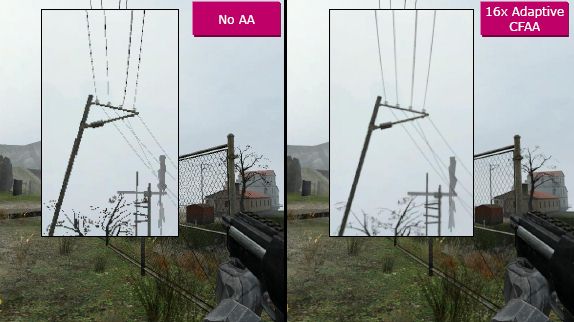
ATI Radeon HD 2900 and 2600 cards are characterized by full CrossFire support, now without a special "master card", due to the presence of a special integrated module, a new AFR detection algorithm and special CrossFire jumpers. CrossFire mode supports resolutions up to 2560x2048 @ 60Hz with plug-n-play installation and dual DVI interface. All previously available CrossFire modes are supported - Alternate Frame Rendering, SuperTile, Scissor, SuperAA.

In conclusion, it is worth mentioning that the new video cards had support for HDMI and HDCP, while full support for HDMI displays with high resolution was implemented. With built-in HD audio controllers, the ATI Radeon HD 2000 family of graphics cards can output high-quality 5.1-channel audio (ATI Radeon HD 2900 XT and ATI Radeon 2600) in AC3 format via HDMI
Specifications ATI Radeon HD 2900 XT
| Name | Radeon HD 2900XT |
| Core | R600 |
| Process technology (µm) | 0.08 |
| Transistors (million) | 720 |
| Core frequency | 740 |
| Memory frequency (DDR) | 825 (1650) |
| Bus and memory type | GDDR3 512bit |
| Bandwidth (Gb/s) | 105.6 |
| Unified shader blocks | 320 |
| Frequency of unified shader units | 740 |
| TMU per conveyor | 16 (total) |
| ROP | 16 |
| textures per clock | 16 |
| textures per pass | 16 |
| Shader Model | 4.0 |
| Fill Rate (Mpix/s) | 11840 |
| Fill Rate (Mtex/s) | 11840 |
| DirectX | 10.0 |
| Anti-Aliasing (Max) | MS-24x |
| Anisotropic Filtering (Max) | 16x Quality |
| Memory | 512/1024 |
| Interface | PCI-E |
| RAMDAC | 2x400 |
According to a well-established, but unofficial tradition, each new flagship released by NVIDIA or ATI outperformed a competitor from the opposite camp. But we see a completely different picture. Both the recommended price of 9 and the performance level made the Radeon HD2900XT a direct competitor to the GeForce 8800GTS, but it is not positioned as a top product either. Of course, the army of ATI fans expected more from the R600.
lost planet
